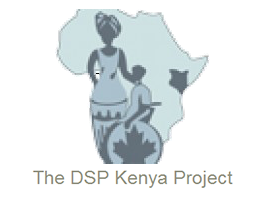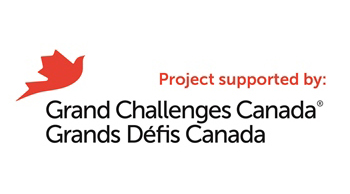5.2 – Why should rehabilitation providers use outcome measures?
Evidence-based practice is now a well-accepted component of health and medical care in many parts of the world.
What is evidence-based practice?
- "the conscientious, explicit, and judicious use of current best evidence in making decisions about the care of individual patients"1
What is the goal of evidence-based rehabilitation?
- To incorporate research findings with clinical wisdom and clients' preferences to inform rehabilitation assessment and treatment.2
Research questions addressed in rehabilitation include:
- the effectiveness and safety of interventions;
- the frequency of diseases and disability;
- aetiology and risk factors;
- prediction and diagnosis;
- diagnostic accuracy and other phenomena including hypothesis generation.3
The evidence base in rehabilitation is growing rapidly, but translating these findings into practice remains a challenge.4,5,6,7,8 The goal of this resource is to provide evidence-informed guidance on rehabilitation for adults and children living with HIV.
Rycroft-Malone et al 9 describe four types of evidence that can contribute to the delivery of care: 1) research, 2) clinical experience, 3) patient experience, and 4) information from the local context.
Research: The strongest type of research evidence is a blinded, randomized controlled trial (RCT) for testing an intervention.10 However, other types of quantitative and qualitative research are valuable when used appropriately.
Clinical experience: Knowledge from clinical experience is a crucial component of evidence-based practice to achieve client-centred care. This perspective allows clinicians to work according to their skills and experiences.
Patient experience: Knowledge from clients, family members and carers regarding what works for the client is crucial. Communication of desires and goals are necessary to apply the research-based evidence appropriately.
Information from the local context: Finally, practice can be improved by incorporating knowledge from the local context, including knowledge of an organization's culture and the local health system.
Why use outcome measures?
- As evidence-based practice and initiatives to improve healthcare have grown around the world, there has been increased recognition of the need to measure outcomes.
- Using outcome measures in practice is important because it helps rehabilitation providers:
- Maintain objectivity and standardize assessment when working with clients
- Compare a client’s function to other people living with HIV, or the general population
- Determine whether changes in a client's health status occur over time
- Facilitate communication about a client's health status among members of the health care team, clients, or policymakers to ensure all stakeholders speak the same language.
- e.g., when a client is transferred from acute to rehabilitation care, the rehabilitation provider in acute care can indicate scores on a symptom index in the chart, and the rehabilitation provider in the rehabilitation department will be able to know what they mean
- Determine whether a change in health status occurs in response to a particular intervention.
Why are using outcome measures in rehabilitation with people living with HIV important in sub-Saharan Africa?
- HIV management can be complex, which demands a comprehensive continuum of care.
- Given the complexity of care associated with rehabilitation of people living with HIV, key issues to be addressed include: ‘what works?’, ‘how can it be measured?’, ‘what can be used to measure that which works?’
Table 5.2: Purpose of outcome measures
| Purpose | Description |
|---|---|
Descriptive |
Describes the state of a health construct at a point in time. This description can be used to compare the client to other clients, or the general population. For example, measuring activities of daily living or symptom severity at one point in time. |
Predictive |
Used to predict outcome or make a prognosis, helps clinicians set treatment goals or discharge plans, and anticipate the need for home adjustments or community support.11,12 For example, using a balance scale to predict whether someone is at risk of falling. |
Evaluative |
Useful for detecting the magnitude of change over time in an individual or group.13, 14 For example, measuring health-related quality of life (HRQL) at two time points, such as before and after a six-week rehabilitation program to see if there are changes (improvement or worsening) in HRQL. |
Discriminative |
Differentiates between patient groups and identifies differences in patients’ abilities15 |
What would rehabilitation providers measure in people living with HIV?
There are many "things" (otherwise referred to as constructs or concepts) that health professionals might measure with clients. These health-related concepts exist at multiple levels:
- Body structure and function, e.g.,:
- Presence and bothersome nature of symptoms: HIV Symptom Index
- Fatigue: HIV Fatigue Scale
- Depression: Centres for Epidemiologic Studies Depression Scale
- Activity, e.g.,:
- Activities of daily living: Assessment of Motor and Process Skills (AMPS)
- Self-management self-efficacy: Perceived HIV Self-Management Scale
- Functional Assessment of HIV Infection
- Social participation, e.g.,:
- Social Support: Medical Outcomes Study Social Support Survey (MOS-SS)
- Stigma: HIV Stigma Scale
- Coping Response: Brief COPE Scale
- Stress: HIV Stress Scale
- Health-related quality of life
1Sackett DL, Rosenberg WM, Gray JA, Haynes RB, Richardson WS. Evidence based medicine: what it is and what it isn't. BMJ. 1996 Jan 13;312(7023):71-2. PubMed PMID: 8555924; PubMed Central PMCID: PMC2349778. http://www.ncbi.nlm.nih.gov/pubmed/8555924.
2Law M, MacDermid J. Evidence-Based Rehabilitation: a Guide to Practice, Second Edition. 2nd ed. Thoroughfare (NJ): Slack In, 2008. http://www.healio.com. Accessed Aug. 2, 2013.
3Glasziou P, Irwig L, Bain C, Colditz G. Systematic Reviews in Health Care: A Practical Guide. 1st ed. Cambridge (UK): Cambridge University Press, 2001.
4Salbach NM, Guilcher SJ, Jaglal SB, Davis DA. Factors influencing information seeking by physical therapists providing stroke management. Phys Ther. 2009a Oct;89(10):1039-50. Epub 2009 Aug 6. PubMed PMID: 19661160. http://www.ncbi.nlm.nih.gov/pubmed/19661160.
5Salbach NM, Veinot P, Rappolt S, Bayley M, Burnett D, Judd M, Jaglal SB. Physical therapists' experiences updating the clinical management of walking rehabilitation after stroke: a qualitative study. Phys Ther. 2009b Jun;89(6):556-68. Epub 2009 Apr 16. PubMed PMID: 19372171. http://www.ncbi.nlm.nih.gov/pubmed/19372171.
6Salbach NM, Jaglal SB, Korner-Bitensky N, Rappolt S, Davis D. Practitioner and organizational barriers to evidence-based practice of physical therapists for people with stroke. Phys Ther. 2007 Oct;87(10):1284-303. Epub 2007 Aug 7. PubMed PMID: 17684088. http://www.ncbi.nlm.nih.gov/pubmed/17684088.
7Menon A, Korner-Bitensky N, Kastner M, McKibbon KA, Straus S. Strategies for rehabilitation professionals to move evidence-based knowledge into practice: a systematic review. J Rehabil Med. 2009 Nov;41(13):1024-32. Review. PubMed PMID: 19893996. http://www.ncbi.nlm.nih.gov/pubmed/19893996.
8MacDermid JC, Graham ID. Knowledge translation: putting the "practice" in evidence-based practice. Hand Clin. 2009 Feb;25(1):125-43, viii. PubMed PMID: 19232922. http://www.ncbi.nlm.nih.gov/pubmed/19232922.
9Rycroft-Malone J, Seers K, Titchen A, Harvey G, Kitson A, McCormack B. What counts as evidence in evidence-based practice? J Adv Nurs. 2004 Jul;47(1):81-90. PubMed PMID: 15186471. http://www.ncbi.nlm.nih.gov/pubmed/15186471.
10Clancy MJ. Overview of research designs. Emerg Med J. 2002 Nov;19(6):546-9. Review. PubMed PMID: 12421782; PubMed Central PMCID: PMC1756301. http://www.ncbi.nlm.nih.gov/pubmed/12421782.
11Hsieh CL, Sheu CF, Hsueh IP, Wang CH. Trunk control as an early predictor of comprehensive activities of daily living function in stroke patients. Stroke 2002;33:2626–2630.
12Kwakkel G, Wagenaar RC, Kollen BJ, Lankhorst GJ. Predicting disability in stroke – a critical review of the literature. Age Ageing 1996;25:479–489.
13Kirshner B, Guyatt G. A methodological framework for assessing health indices. J Chronic Dis 1985;38:27–36.
14Deyo RA, Centor RM. Assessing the responsiveness of functional scales to clinical change: an analogy to diagnostic test performance. J Chronic Dis 1986;39:897–906.
15Brock KA, Goldie PA, Greenwood KM. Evaluating the effective- ness of stroke rehabilitation: choosing a discriminative measure. Arch Phys Med Rehabil 2002;83:92–99.

 Previous Page
Previous Page




